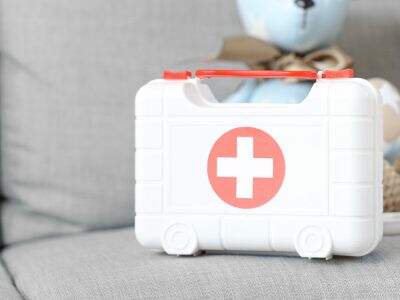What do you know about a chest seal? A chest seal is a crucial medical device that doctors utilize when treating patients with penetrating chest wounds. If someone has a wound like this, it can be very serious: they can get air inside the chest. If air gets in, it can cause a lung to collapse, which is extremely risky. That’s also why chest seals are so effective, they seal the skin and keep air from entering in the chest cavity. The two types of chest seal are vented and non-vented, and each has a unique application.
Things To Do With Vented And Non-Vented Chest Seals
Let’s take a deeper look at what these two chest seals are. Vented chest seals have small holes, or vents, that let air out of the chest. Why this is really important is that compressed air can cause a lot of pressure buildup. The vent assists with releasing that pressure and makes it a little easier for the patient to breathe. Conversely, non-vented chest seals have no holes at all. They are meant to be used on certain kinds of wounds, particularly a sucking chest wound, where air is being sucked into the chest. This type of seal helps keep that air out, which is critical for the patient’s safety.
When to Use Each Type?
So planning the type of chest seal is really dependent on the wound itself, and that takes precedence when deciding between vented versus non-vented. If the wound is a sucking chest wound - air getting into the chest, - you need a seal that does NOT vent This kind of seal will prevent air from escaping and will preserve the lung. However, if this is a wound that does allow air into the chest, then you should use a vented chest seal. It is all about picking the right tool of the job.
Depending on the situation, both types of chest seals may be required. An example of this might be, if you have someone with a really gnarly injury, your medics might throw on a non-vented chest seal first to prevent air from entering. But if they see that the patient is having difficulty breathing later, then they might convert to a chest seal vented to allow air to leave the chest. In this way, they can ensure that the patient receives the best treatment possible.
Choosing the Right Chest Seal
Selecting the appropriate chest seal can prove challenging at times, particularly for novice physicians who are still in the learning process. Things To Consider When Choice Which Chest Seal To Use.
Where is the wound? The site of the wound is very significant. S02 is it the upper part of the chest or the lower part? Is it near the lung or not? The answers to these questions will tell you which seal is the best.
How big is the wound? The second thing to consider is the size of the chest wound, which will help determine how large the chest seal should be. A bigger injury may require a larger patch to seal it effectively.
Is there another wound? Medical responders must consider whether there is a second wound. For example, is there an entry wound where something went in, and maybe an exit wound where it came out?” Such information is essential for making the correct choice."
How is the patient breathing? Finally look at how the patient is breathing. If they are struggling, then a vented chest seal usually is the best option as this can relieve some of that pressure.
Which One is Better?
You’re probably asking yourself which kind of chest seal is best. The truth is that answering that question is not simple. There is no better choice between vented & non-vented chest seals, inherently. It really depends on what the patient tasked me to do at that moment. Vented seals are used for most kinds of air-entry wounds, and non-vented seals are best for sucking chest wounds. Sometimes, all of those seals are not enough and medical responders will have to use both seals to give the best care.
Why it affects Choosing the Right Seal?
Knowing the difference between vented and non-vented chest seals could be critical in assisting patients. Shedding light on proper sealing techniques can really make a difference in how well a patient is treated. Medresq- Safety Driven. A brand focusing on safety with various grades of chest seals for various medicine. With these products, young medical helpers could be assured that they were using trustworthy implements to heal chest wounds.
Ultimately, understanding how to effectively utilize vented and non-vented chest seals is critical in providing optimal care to patients. Although there is no clear "better" option, there are many different factors for medical helpers to consider when deciding which seal to use. Medresq offers BFD trusted chest seals — saving lives with confidence and skill.
 EN
EN
 FR
FR
 DE
DE
 IT
IT
 JA
JA
 KO
KO
 RU
RU
 ES
ES
 AR
AR
 BG
BG
 HR
HR
 DA
DA
 NL
NL
 FI
FI
 EL
EL
 NO
NO
 PL
PL
 PT
PT
 RO
RO
 SV
SV
 TL
TL
 ID
ID
 SR
SR
 UK
UK
 VI
VI
 SQ
SQ
 TH
TH
 TR
TR
 AF
AF
 MS
MS
 CY
CY
 IS
IS
 HY
HY
 AZ
AZ
 KA
KA
 MN
MN
 MY
MY
 KK
KK
 UZ
UZ
 CS
CS



